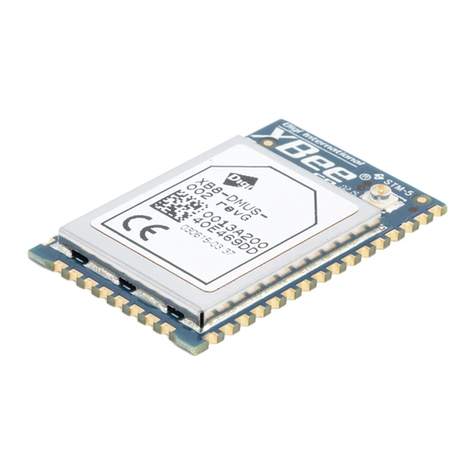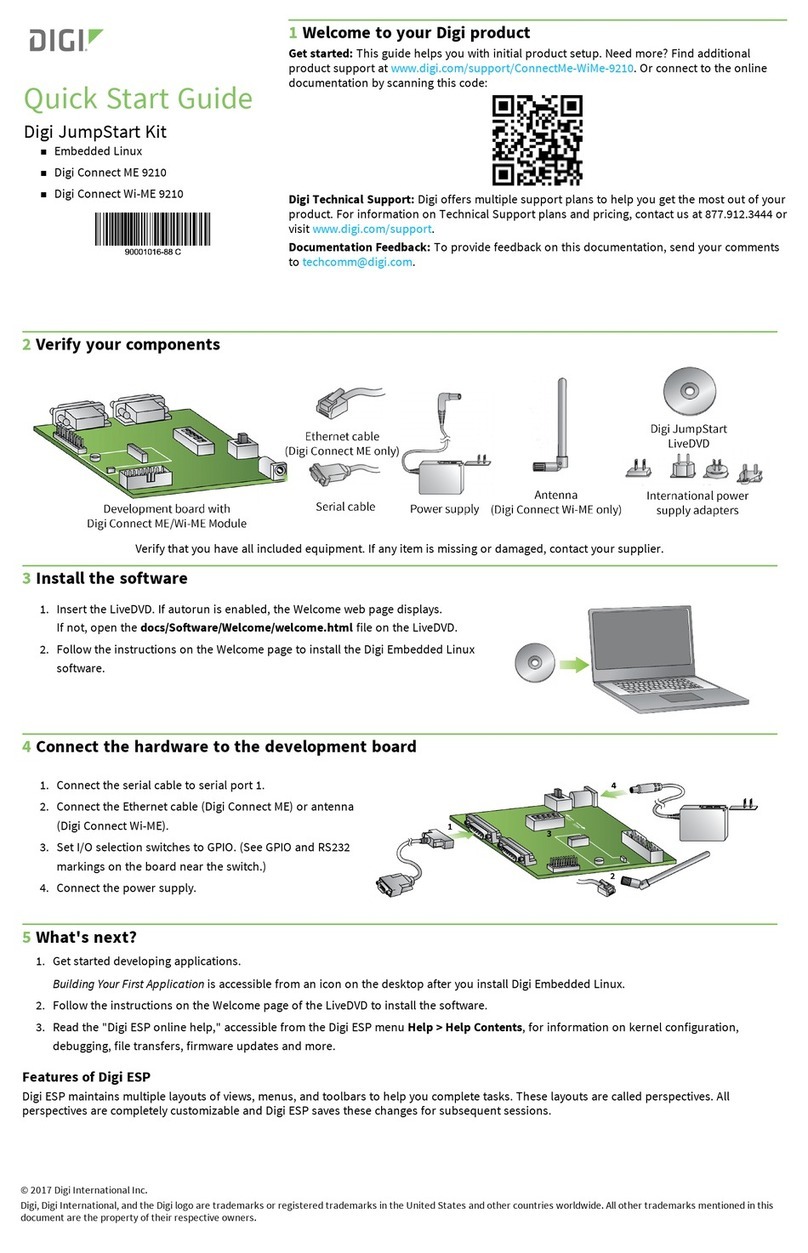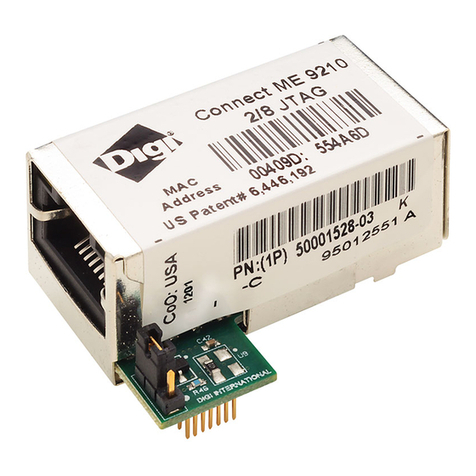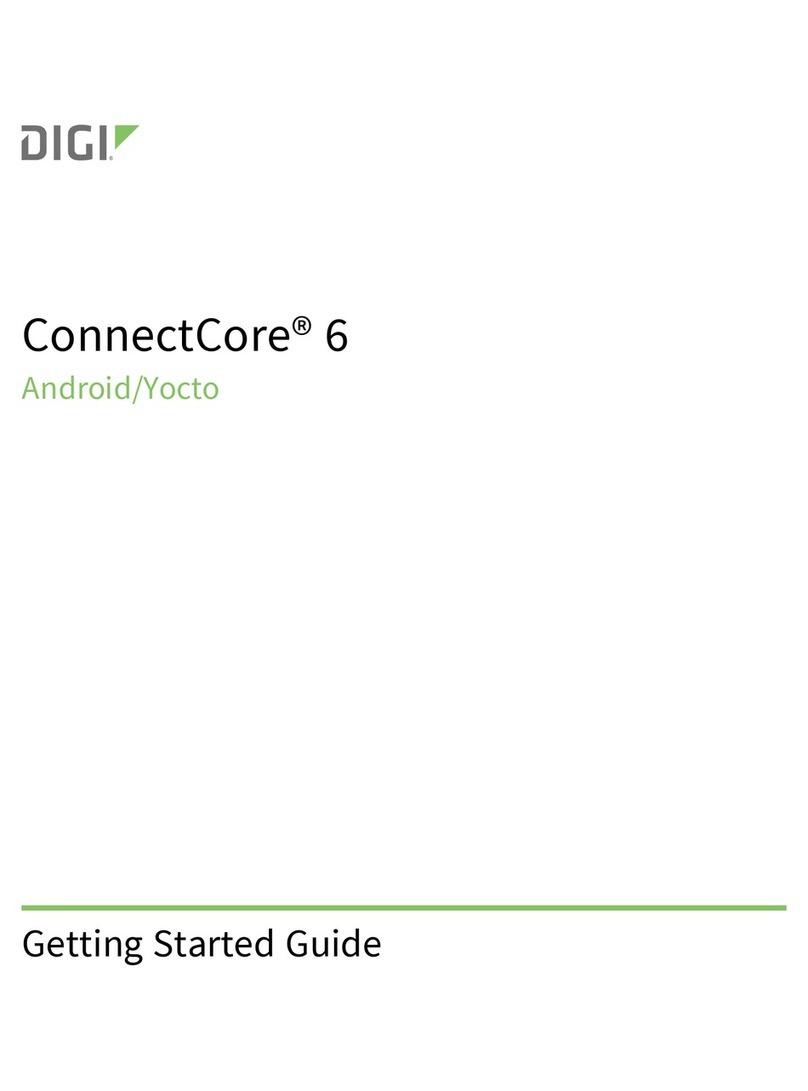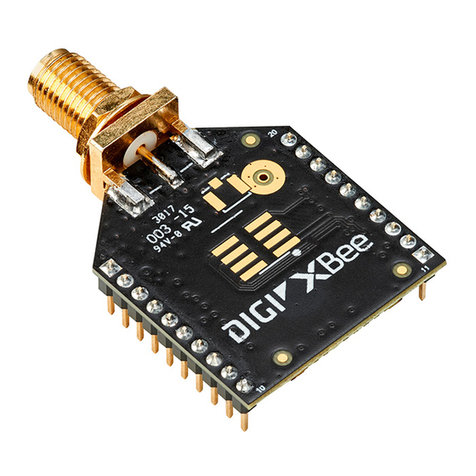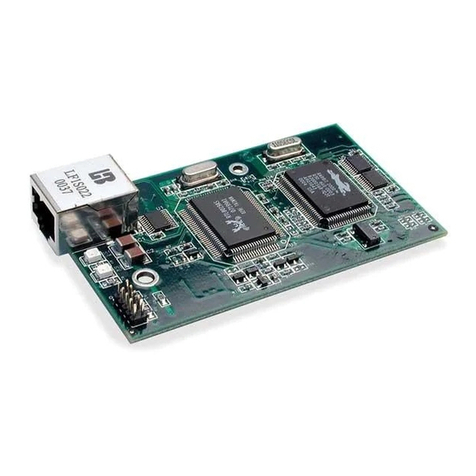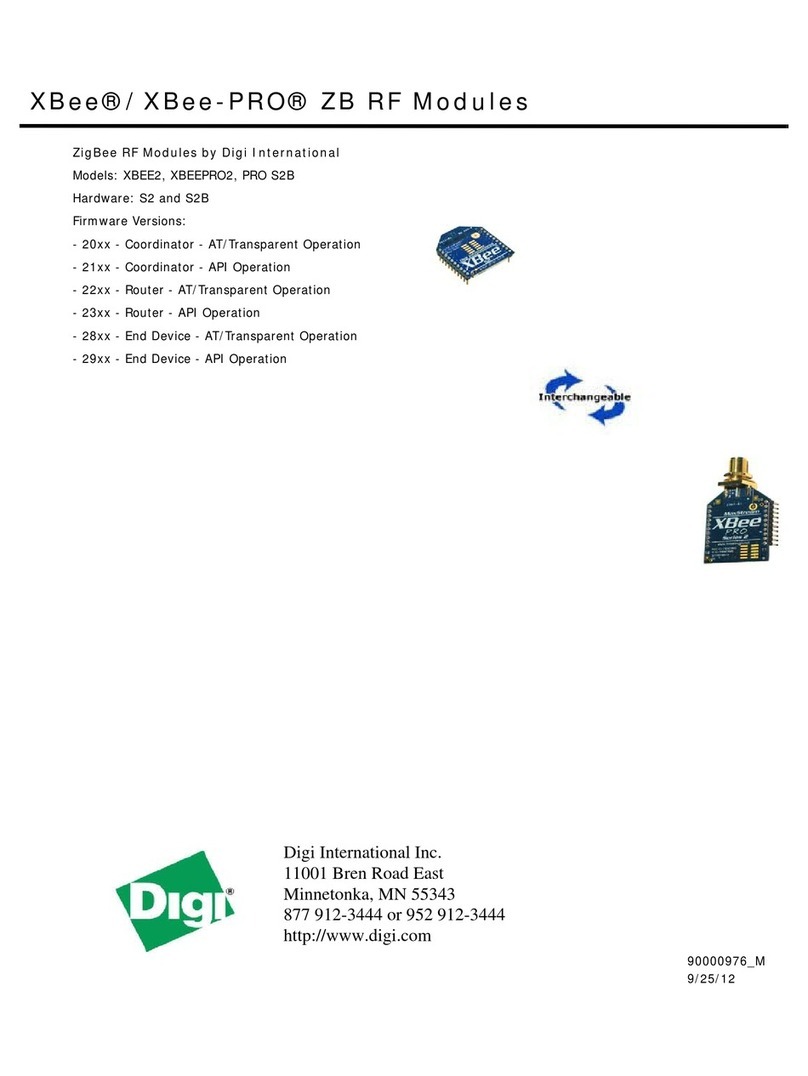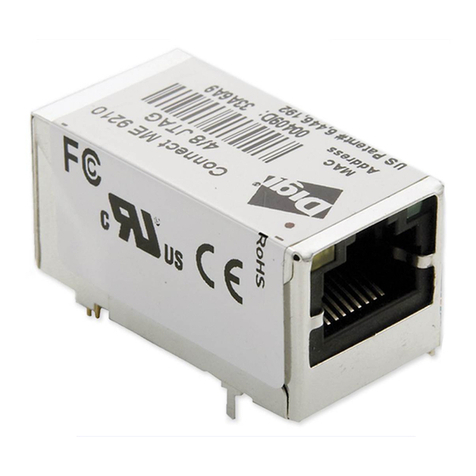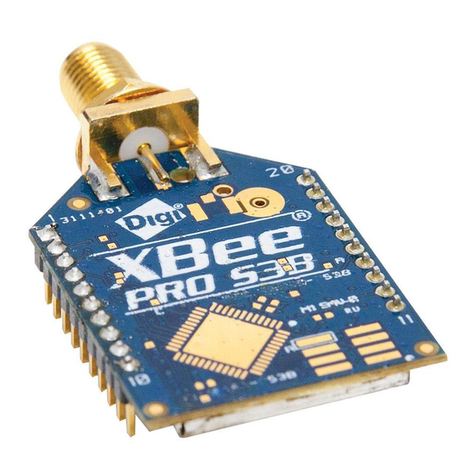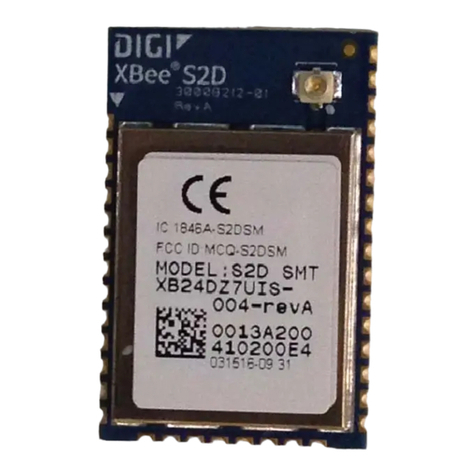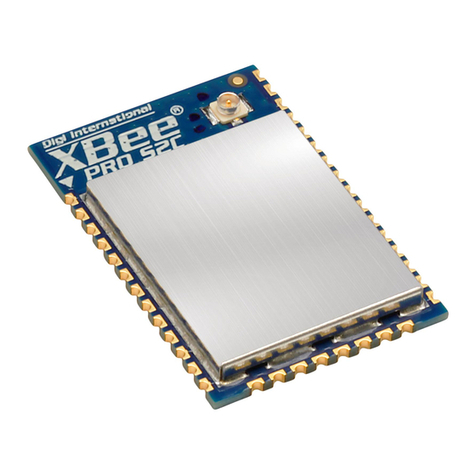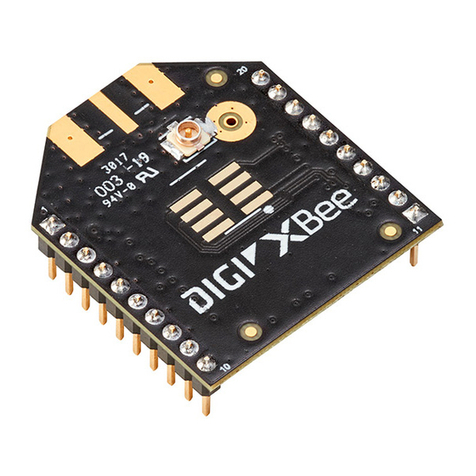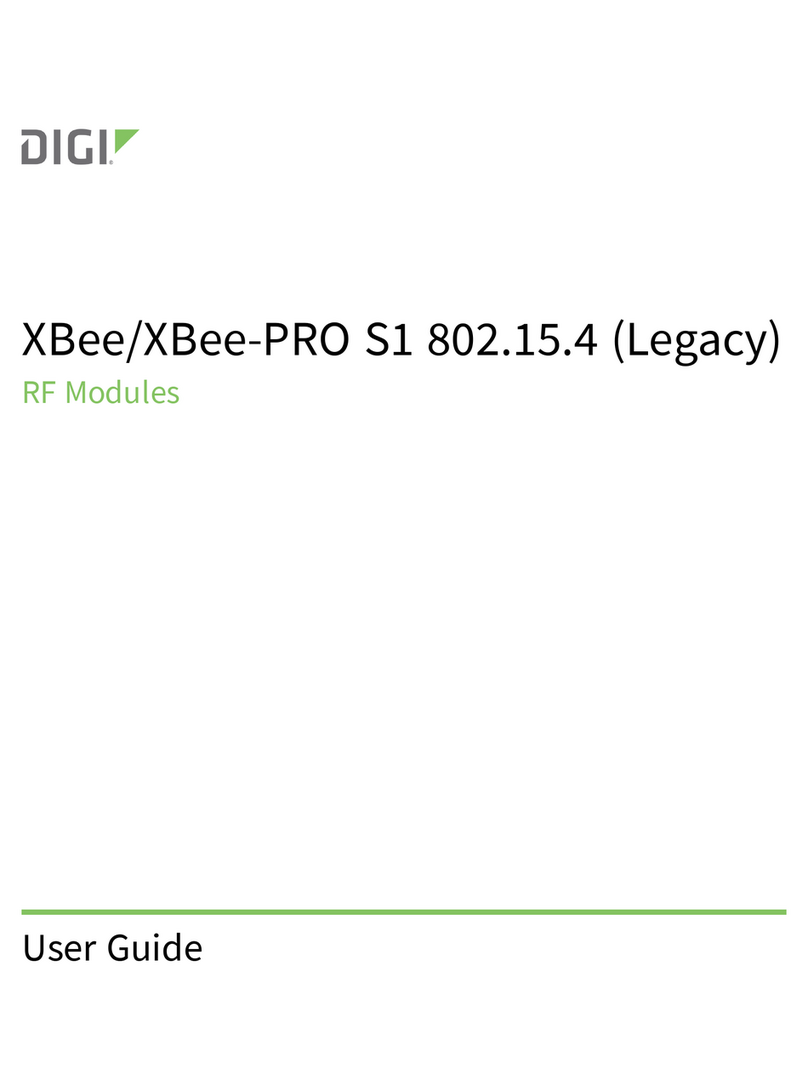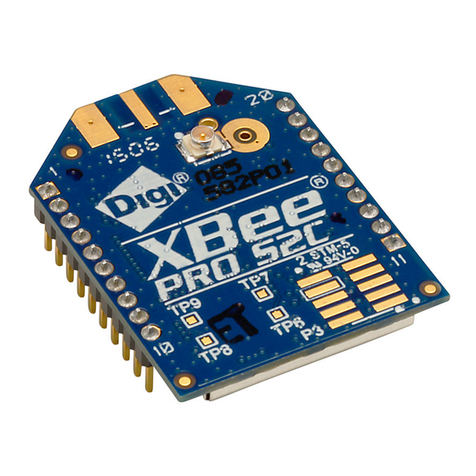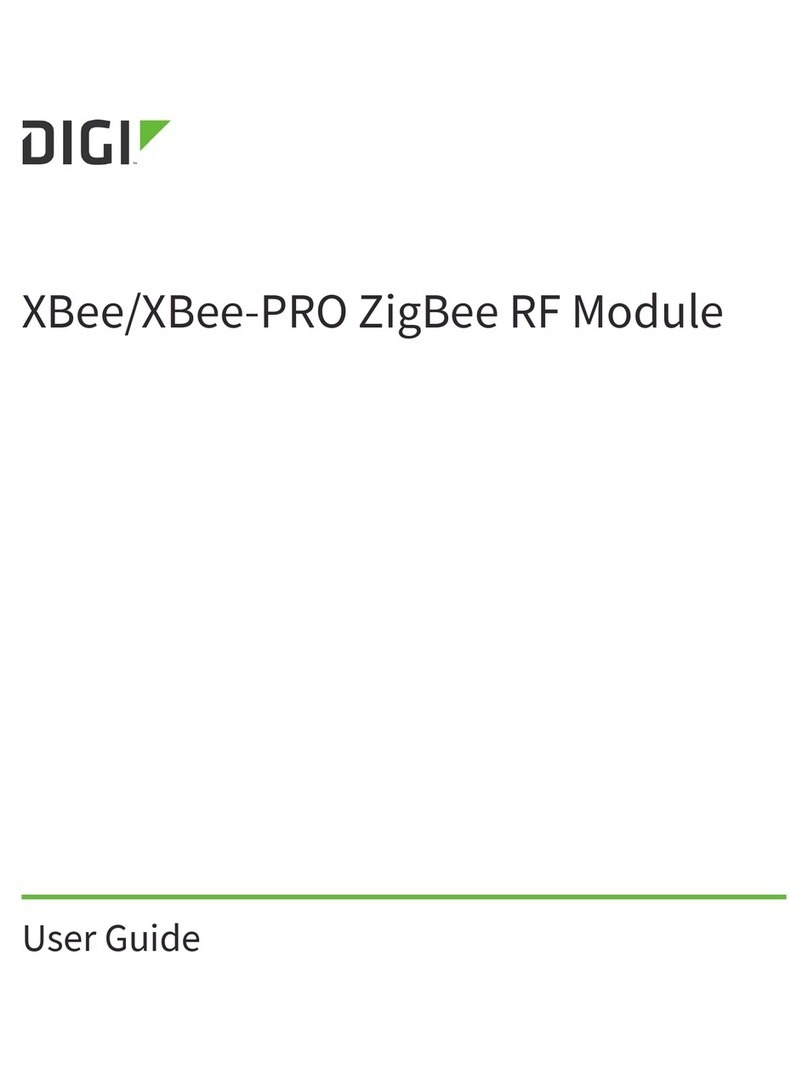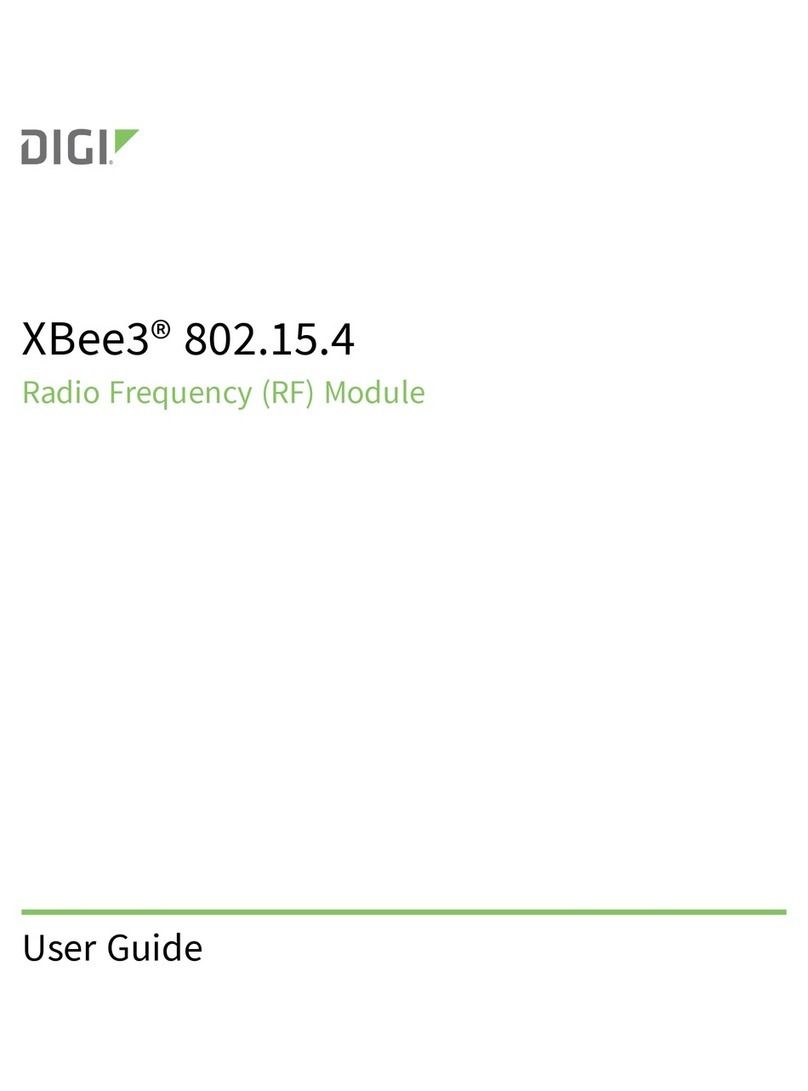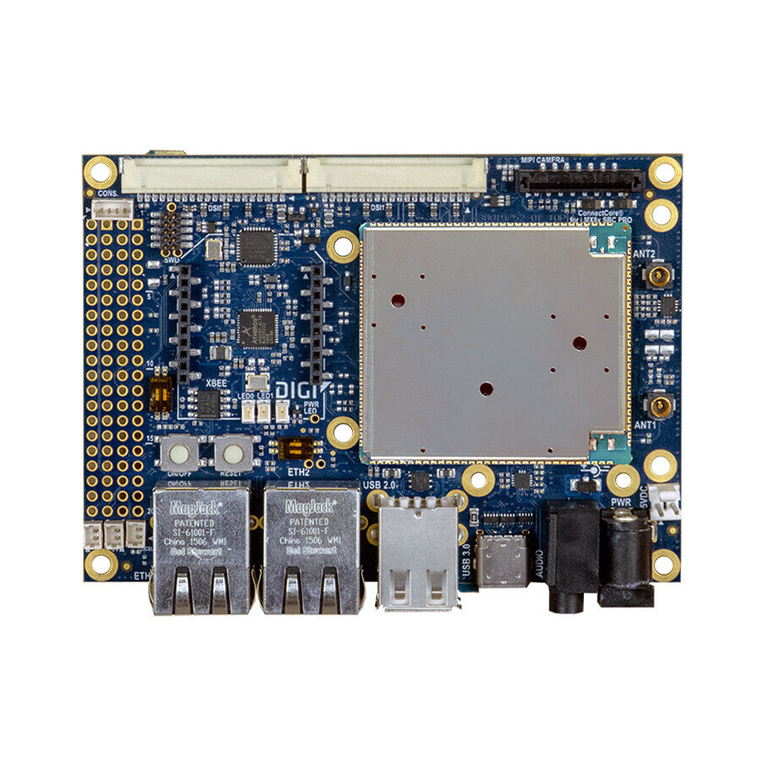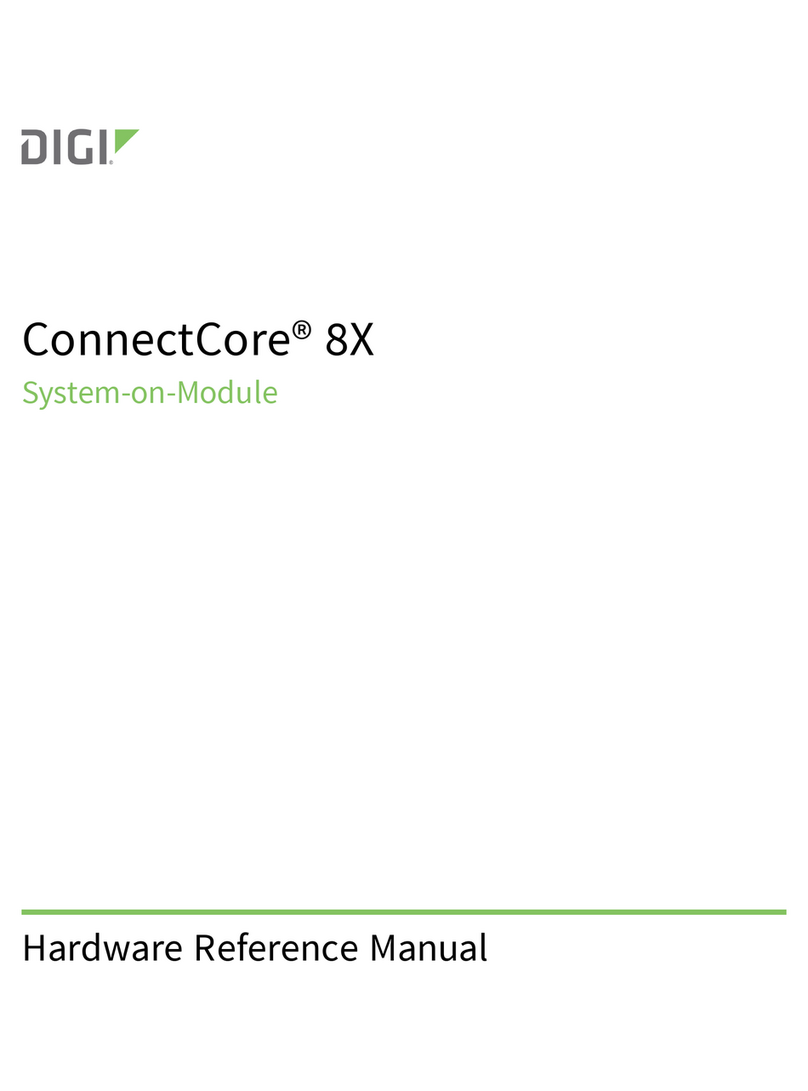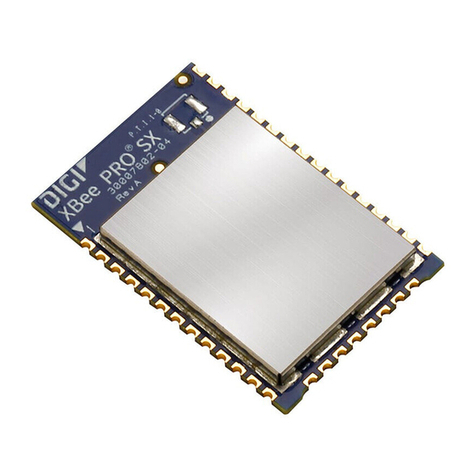
XBee®-PRO 900HP/XSC RF Modules 9
Frame descriptions
Legacy TX Request frame - 0x00 121
AT Command frame - 0x08 122
AT Command - Queue Parameter Value frame - 0x09 124
Transmit Request frame - 0x10 126
Explicit Addressing Command frame - 0x11 129
Remote AT Command Request frame - 0x17 132
Legacy RX Indicator frame - 0x80 134
AT Command Response frame - 0x88 136
TX Status frame - 0x89 138
Modem Status frame - 0x8A 139
Transmit Status frame - 0x8B 140
Route Information Packet frame - 0x8D 142
Aggregate Addressing Update frame - 0x8E 145
Receive Packet frame - 0x90 147
Explicit Rx Indicator frame - 0x91 149
I/O Data Sample Rx Indicator frame - 0x92 152
Node Identification Indicator frame - 0x95 154
Remote Command Response frame - 0x97 157
Advanced application features
Remote configuration commands 160
Send a remote command 160
Apply changes on remote devices 160
Remote command responses 160
Network commissioning and diagnostics 160
Configure devices 160
Network link establishment and maintenance 161
Place devices 162
Device discovery 162
Link reliability 163
Commissioning pushbutton and associate LED 165
I/O line monitoring 168
I/O samples 168
Queried sampling 168
Periodic I/O sampling 171
Detect digital I/O changes 171
General Purpose Flash Memory
General Purpose Flash Memory 173
Access General Purpose Flash Memory 173
General Purpose Flash Memory commands 174
PLATFORM_INFO_REQUEST (0x00) 174
PLATFORM_INFO (0x80) 174
ERASE (0x01) 175
ERASE_RESPONSE (0x81) 175
WRITE (0x02) and ERASE_THEN_WRITE (0x03) 176
WRITE _RESPONSE (0x82) and ERASE_THEN_WRITE_RESPONSE (0x83) 177
READ (0x04) 177
READ_RESPONSE (0x84) 178
FIRMWARE_VERIFY (0x05) and FIRMWARE_VERIFY_AND_INSTALL(0x06) 178
